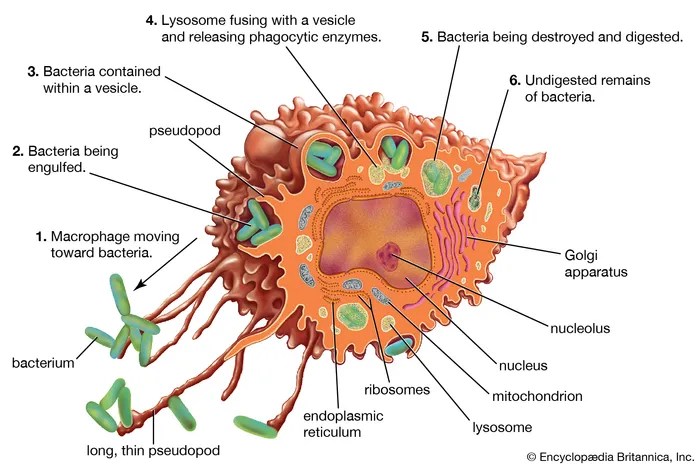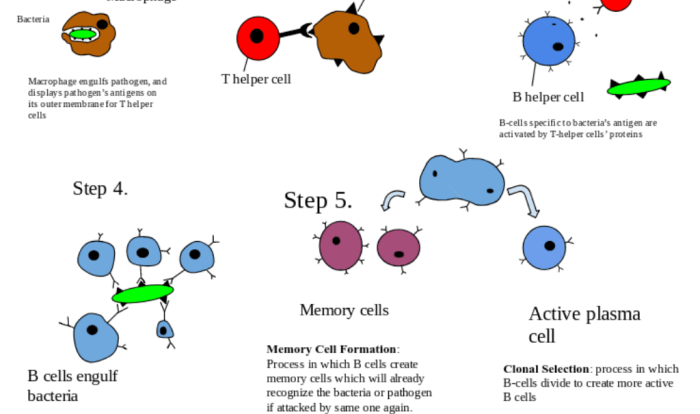Its name means neutral-loving a phagocyte – With its name meaning “neutral-loving phagocytes,” neutrophils stand as sentinels of our immune system, poised to engulf and destroy invading pathogens. Their remarkable phagocytic capabilities, intricate regulatory mechanisms, and clinical significance make them essential players in maintaining our health.
Neutrophils, the most abundant type of white blood cell, are characterized by their ability to engulf and destroy foreign particles, including bacteria, viruses, and fungi. This phagocytic prowess stems from their specialized mechanisms of chemotaxis, adhesion, and ingestion, facilitated by an array of receptors and molecules.
Etymology and Meaning of “Neutrophil”: Its Name Means Neutral-loving A Phagocyte

The term “neutrophil” is derived from the Greek words “neutro” (neutral) and “phil” (loving), reflecting the cell’s neutral staining properties in early histological studies. Neutrophils are neither strongly acidophilic nor basophilic, but rather exhibit a pale, neutral appearance under conventional staining techniques.
Phagocytic Capabilities of Neutrophils

Neutrophils are highly specialized phagocytes, playing a crucial role in the innate immune system. They are equipped with a repertoire of receptors that enable them to recognize and engulf a wide range of microorganisms, including bacteria, fungi, and viruses.
Mechanisms of Neutrophil Phagocytosis, Its name means neutral-loving a phagocyte
Neutrophil phagocytosis involves a series of coordinated steps:
- Chemotaxis:Neutrophils migrate towards the site of infection or inflammation in response to chemical signals released by pathogens or damaged cells.
- Adhesion:Once at the site, neutrophils adhere to the surface of the target microorganism via receptors such as CR3 (complement receptor 3) and Fc receptors.
- Ingestion:The neutrophil extends pseudopodia around the target, engulfing it into a phagosome.
- Phagosome-lysosome fusion:The phagosome fuses with lysosomes, releasing antimicrobial peptides, reactive oxygen species (ROS), and other toxic substances that destroy the ingested microorganism.
Regulation of Neutrophil Phagocytosis

Neutrophil phagocytosis is tightly regulated to ensure efficient pathogen elimination while minimizing tissue damage. Key regulators include:
- Cytokines:Cytokines such as TNF-α and IL-1β stimulate neutrophil recruitment and activation.
- Chemokines:Chemokines such as IL-8 and CXCL1 direct neutrophil migration to the site of infection.
- Fc receptors:Fc receptors bind to the Fc region of antibodies, enhancing neutrophil phagocytosis of antibody-coated pathogens.
Clinical Significance of Neutrophils

Neutrophils are essential for host defense against infection. However, excessive neutrophil activation can also contribute to tissue damage and inflammatory diseases. Elevated neutrophil counts (neutrophilia) are associated with bacterial infections, while decreased neutrophil counts (neutropenia) can increase susceptibility to infections.
Neutrophil counts are routinely used as a diagnostic tool to assess overall immune function and detect infections or inflammatory conditions.
Top FAQs
What is the significance of the term “neutrophil”?
The term “neutrophil” originates from the neutral staining properties of these cells, neither strongly acidic nor basic, providing insights into their unique role in the immune system.
How do neutrophils contribute to immune defense?
Neutrophils are phagocytic cells, engulfing and destroying pathogens through mechanisms such as chemotaxis, adhesion, and ingestion, safeguarding the body against infection.
What factors regulate neutrophil phagocytosis?
Neutrophil phagocytosis is tightly regulated by cytokines, chemokines, and other signaling molecules, ensuring a balanced and targeted immune response.
